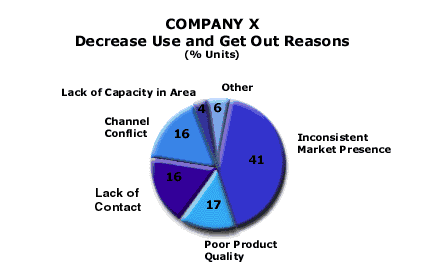BASIC STRATEGY GUIDE: STEP 13
Activity Two (Steps 13-18):
Develop new products and services to gain share with Core Customer segments. Your market share with your Core customers will not grow unless you do something for them that you are not doing now. But, what do you add to your current package of products and services and in what order? This activity answers these questions. It begins with the easiest changes you can make, those that correct the reasons some of your current customers reduce their purchases from you. It proceeds to develop potential innovations that might reduce the costs that customers incur with your product over the life of the product. It checks whether each innovation is difficult or easy to copy because your Company’s package of product and services must be unique in order to increase your market share. Finally, this activity sets priorities for your potential innovations because you can always do more than your money and time will allow you to do.
Step 13: Determine the reasons for the Company’s Negative Volatility in Core Customer segments.

What:
Evaluate all instances of negative volatility among the Company’s Core customer segments to understand the specific reasons for Decrease Use and Get Out events.
The Company sets its priorities for corrective product and service innovations according to the amount of volume it loses due to each cause.
Reasons for Negative Volatility: Industry Examples»
Why:
The first step in a product and service innovation program to develop more market share for the Company is to arrest the loss of sales to current Core customers. This customer volume should be among the highest in profitability. If the Company loses this volume, it will be very expensive to recapture.
What to Watch For:
-
The company’s first value improvement priority should be the elimination of Negative Volatility, especially with its larger Core customers.
-
A strong competitor should have fewer share point losses due to “Get Out” than the industry average.
-
In a Hostile market, the company should not have invitation or evaluation failures due to Price among Core customers.
-
The company’s failures on reliability should be below the industry average.
Action:
Develop specific value innovations to eliminate the major reasons for the Company’s negative volatility with its core customer segments.
More Information on Reasons for Negative Volatility on the Advanced Site >>
For helpful context on this step:
Videos:
-
Video #69: Overview of Products and Services Part 1: How to Look
-
Video #27: Full Description of How the Customer Buying Hierarchy Works
Perspectives:
Symptoms and Implications:
